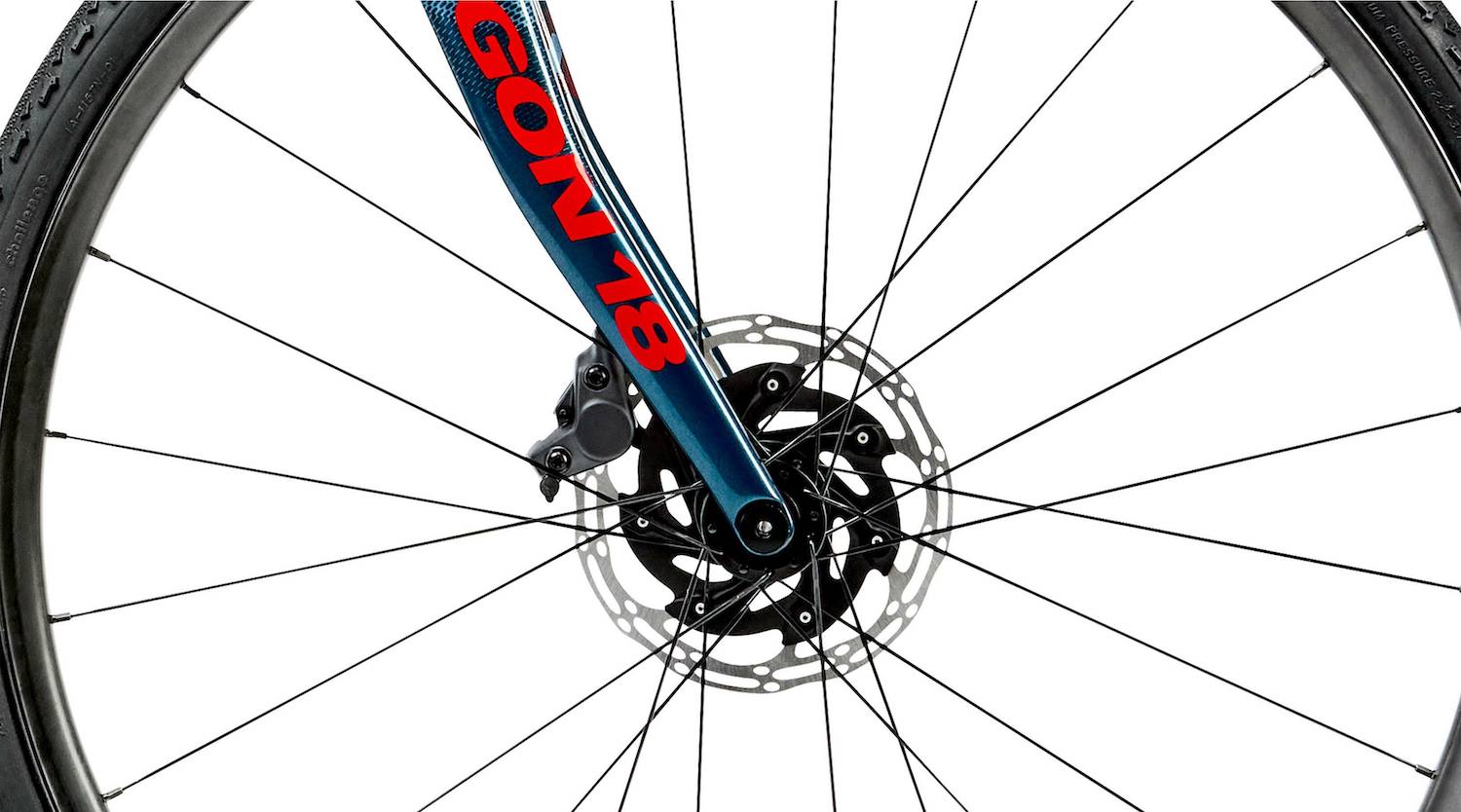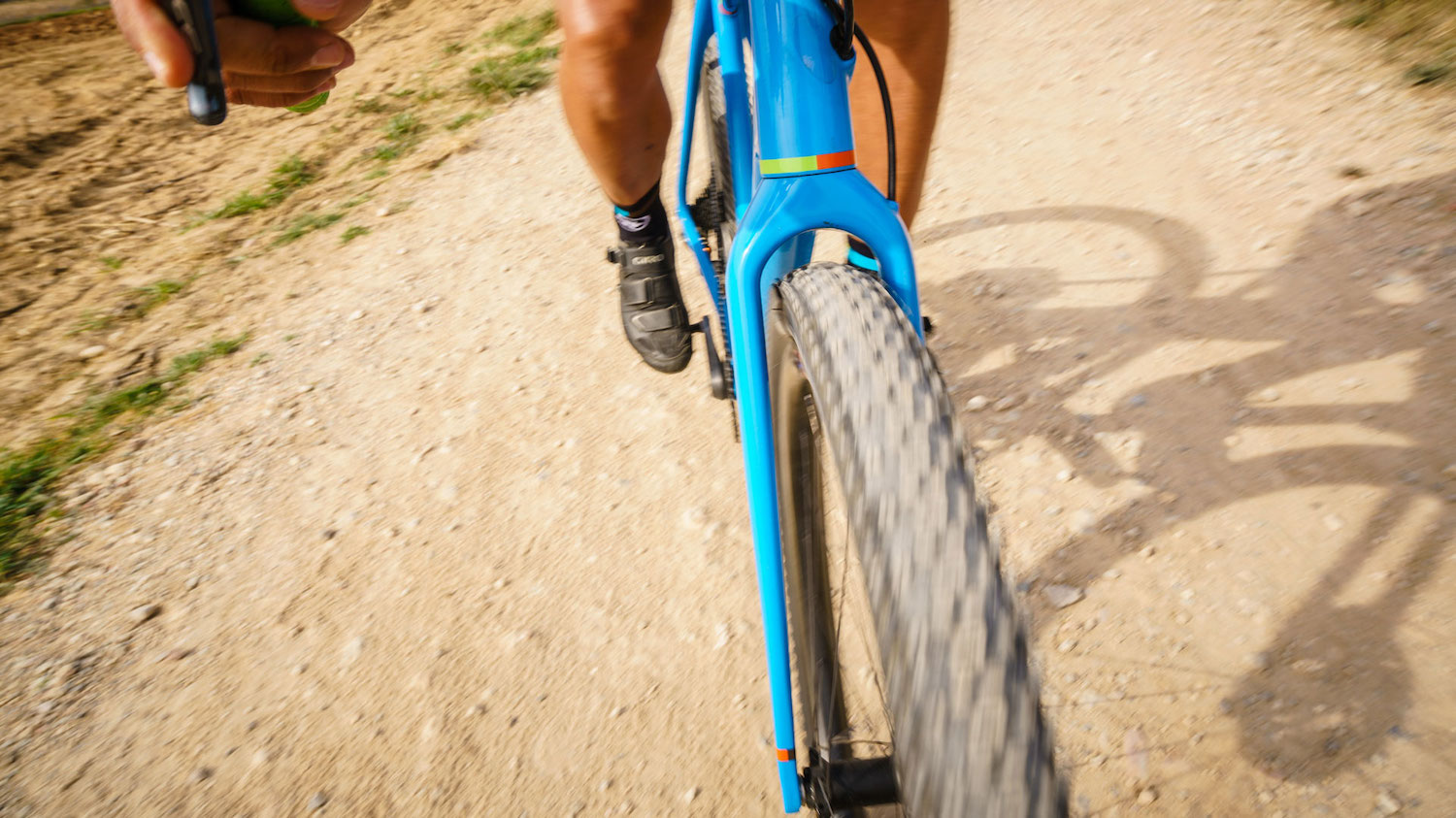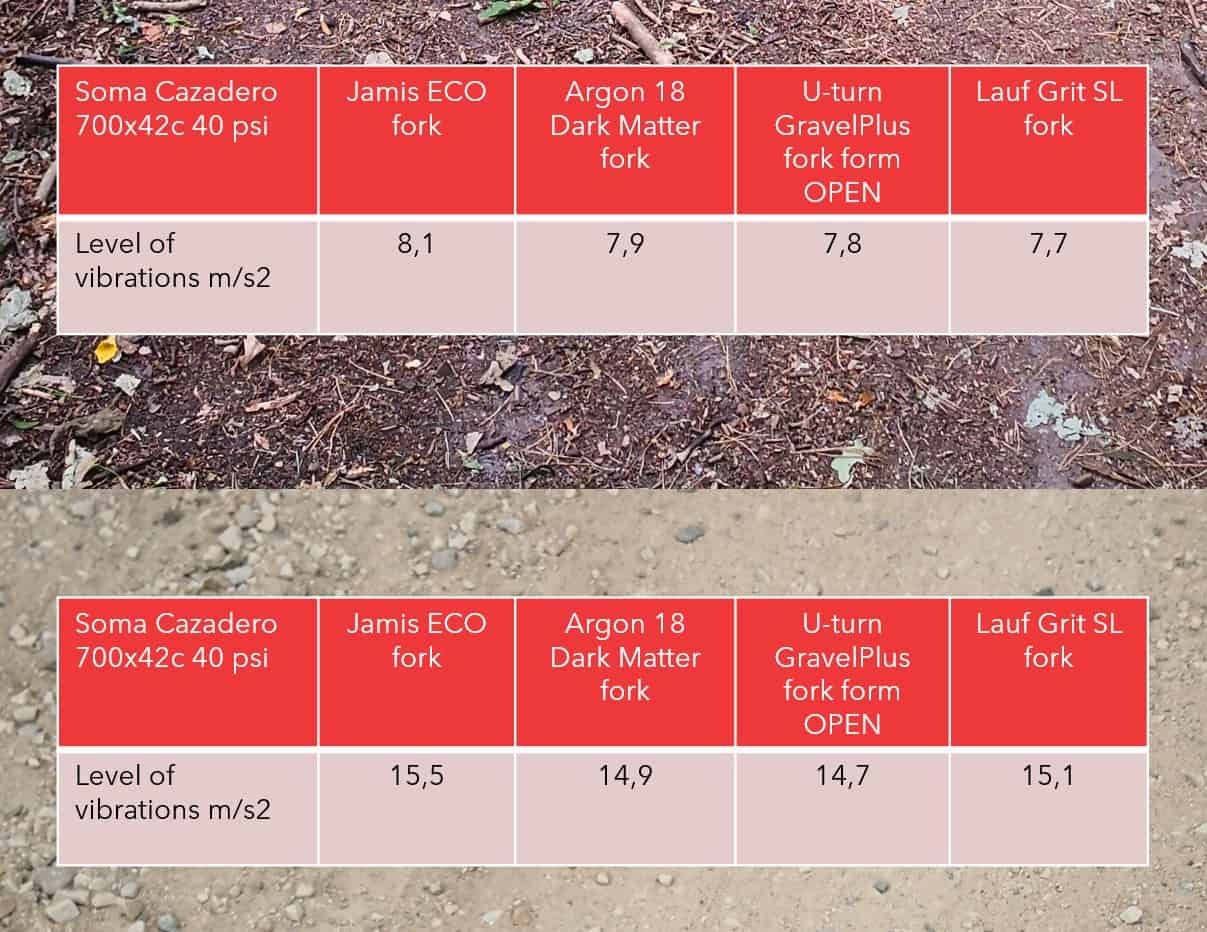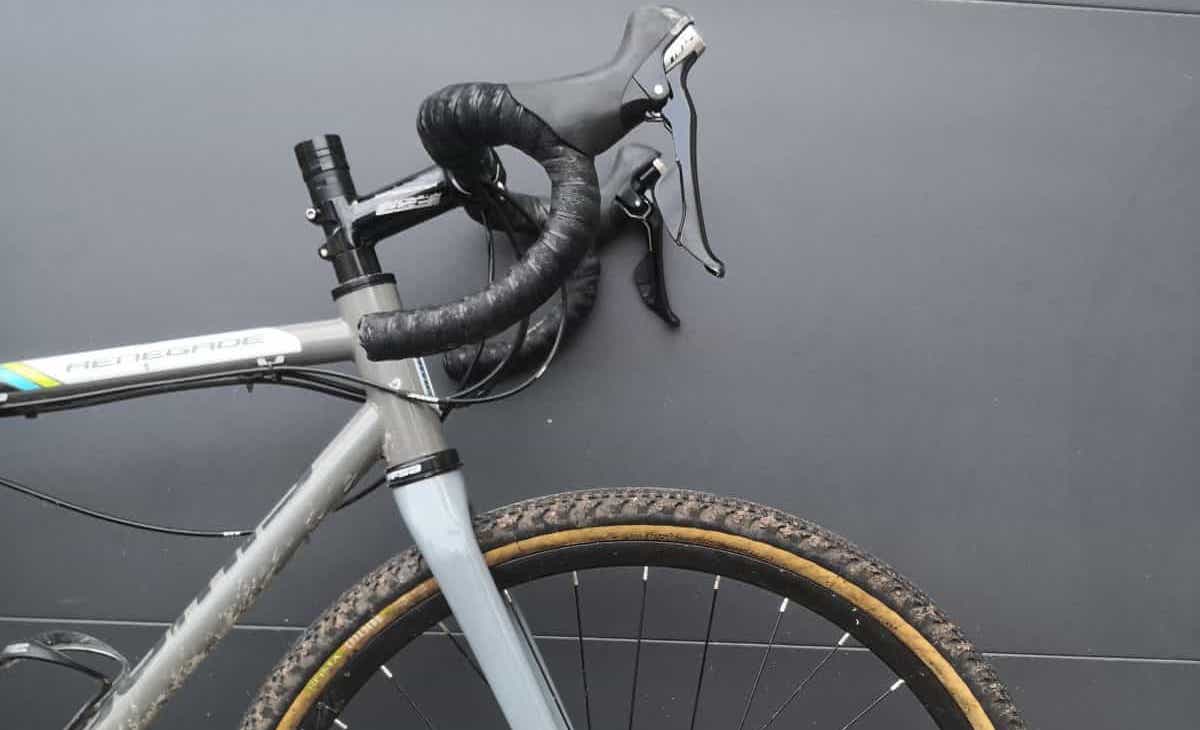A gravel fork is one of the most important components for achieving front-end comfort. According to Cervelo Bikes, the fork blades are the second-most important bicycle component (after the tires) when assessing front vertical compliance.
A stiff fork can make your bike feel harsh on gravel roads. On the other hand, a fork with too much flex (in all directions) can have you losing steering precision.
Making a fork that combines lateral stiffness with vertical compliance is not an easy thing to do, but as my vibration testing shows – it can be done!
The Four Carbon Gravel Forks
My benchmark bike uses a carbon Jamis ECO fork. ECO stands for Enhanced Compliance Offset, a term used to describe how the fork blades can flex vertically to provide compliance.
Similarly, we have the Argon 18 Dark Matter fork. Argon 18 employed a big forward bend to their fork blades, which is said to allow for more vertical compliance without affecting the overall stiffness.
Another solution for improved fork compliance is the Lauf Grit SL suspension fork. It has three very thin glass fibre springs that allow the wheel to move up and down without losing handling precision. But keep in mind that this is a very tall fork that might change your overall bike’s geometry, and therefore, handling characteristics.
The last fork is called the OPEN U-Turn. It promises a lot of flex without any visual suspension gimmicks. And all of this is accomplished with a very low fork weight and high stiffness. It sounds like a holy grail of gravel forks, but is it really?
Bike Setup For The Carbon Fork Comfort Test
To get the best test results possible, I used my Jamis Renegade benchmark bike with a 100mm stem and only 20mm of spacers below. This puts as much body weight on the front wheel as possible.
I used the same wheel and tire for all tests (AlexRims ATD470 and Soma Cazadero 700C x 42mm).
I chose 40 psi in the tires, which is enough to make the fork show its strengths. If I were to use my normal 25 psi I suspect that I would not tease out the true differences between the forks (the tires are your #1 form of suspension).
I also conducted all test runs on the same day, so the weather and road conditions were close to identical for all contenders.
Vibration Test Results
You can see my vibration measurement procedure & outdoor test courses HERE.
In a recent review, I vibration-tested my Jamis ECO carbon fork against the Lauf Grit SL suspension fork. But to my surprise, the difference between these forks was smaller this time around.
At the end of the day, the Lauf Grit SL was only 5% more comfortable than the Jamis ECO on the bumpy forest trail, and 2,6% better on the fast gravel road (which at this time of the year was also a very bumpy road).
I was really surprised by the Argon 18 fork. On the fast gravel road, it was slightly more comfortable than the Lauf Grit SL suspension fork – only 1,4%, but still. And on the bumpy forest trail, the Lauf Grit SL performed better, but the difference in vibration was somewhat small at 2,6%.
The OPEN U-Turn fork was a complete shocker! It was the most compliant fork on the fast gravel road (beating Argon 18’s fork by 1,4%). And what is even more astonishing is that it was only 1,3% less compliant on a bumpy forest trail than the Lauf Grit SL suspension fork.
Carbon Fork Comfort Analysis
If you use a bike with a fork similar to the OPEN U-Turn, there might not be any need to use a suspension fork like the Lauf Grit SL.
Carbon gravel forks have reached an extremely high level of compliance, and this is demonstrated by the very negligible difference in terms of vibration damping between the best carbon forks.
I’ve been told by bike designers many times that the shape of the fork is just as important as the carbon layup. But interestingly, you don’t need a big bend in the fork to achieve great comfort results. The straight blades of the OPEN U-Turn did a great job, achieving both high lateral stiffness and vertical compliance. I suspect that it’s more about the fork material and carbon layup.
The great result of the OPEN U-Turn fork is even more remarkable when you compare the fork lengths.
The Lauf Grit SL has a 411mm axle-to-crown height (sag included), the Jamis ECO is 405mm, and the OPEN U-Turn is 395mm. And the shortest fork in this comparison was the Argon 18 with an axle-to-crown of 390mm.
Perhaps, if the OPEN and Argon 18 forks were a little bit longer, we would see even more vertical compliance (as you can bend a longer lever with less force).
Summary
During this test, I compared four very good carbon forks. I would have loved to have tested a stiff fork that performed poorly too, but unfortunately, I only had access to high-end carbon products (the shame!). But don’t worry, I plan to do that in the future.
For now, we can conclude that you might not need a suspension fork like the Lauf Grit SL if you primarily ride on fast gravel roads. A straight carbon fork like the OPEN U-Turn can provide similar (or even better) vibration damping on both bumpy forest trails and fast gravel roads.












